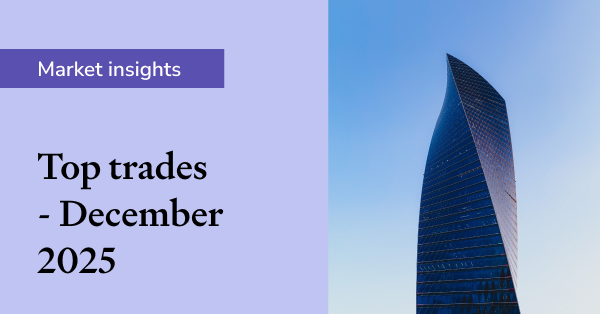The art of the loss: Getting better through investing mistakes
Analysing the reasons for a catastrophic investment loss is like watching a 24-hour episode of Air Crash Investigations. With the benefit of time, one can see how a series of compounding errors can turn a tricky situation into a fully-fledged disaster.
As the decades passed, the aviation industry improved its safety record. Redundancy, an engineering concept whereby backup systems take over when a key component or process fails, has helped. So too have cockpit checklists that reduce human error, and technological advances such as the traffic collision avoidance system (TCAS) and radar.
We don’t have the luxury of decades. The human lifespan, and the mid-life period when we’re accumulating resources and putting them to work, isn’t long enough to allow it. Humans must accumulate investing knowledge faster than the aviation industry did in its first 40 years.
There is another factor that makes this harder. Investing is not like flying a plane. It is entirely rational for a young pilot embarking on their career to believe they will finish it without crashing. The opposite is true in investing, where crashes are guaranteed.
In other words, investing presents plenty of learning opportunities. As the aphorism goes, ‘Good judgement comes from experience, and experience comes from bad judgement’. The best we can hope for is to learn from our errors, minimise their cost and reduce their incidence. The question is how best to do that.
Professional fund managers have adopted the aviation industry’s approach to crashes but not replicated its success. Whilst fundies love talking about their ‘process’, the secret sauce that helps them pick big winners and escape disaster, often backed by 80-slide presentations, there’s not much evidence that it actually works.
Having recently published a book on investing mistakes, I feel qualified to offer an alternative approach.

Welcome the opportunity to lose money
Unless you’re running a Ponzi scheme like Bernie Madoff, you cannot invest without losing money, even if only on paper. Don’t be afraid of that.
As anyone learning a new language knows, it is only when you visit the country that you realise how much you don’t know. This embarrassment and awkwardness is the route to improvement. We must have constant exposure to reap the benefits.
Gaining investment knowledge is similar. You can run a dummy portfolio, trade paper stocks and read all the investment books you like, but it’s only when you have your own money at stake that you really begin to understand what it’s all about. Visit Investorland, welcome the embarrassment and embrace the pain. Improvement awaits.
Make small errors rather than big ones
Whether you lose $2,000 on a stock or $200,000 need not matter, at least not in terms of the lessons you might take from it. If you’re starting out, stick to your limits and only invest what you can afford to lose, even if you feel confident about a stock you’ve just bought.
The aim is to stay in the game by not making mistakes that will remove you from it. Then, when you have accumulated more experience and confidence — one is a function of the other — and more money, you can start making bigger calls. Putting a third or a half of your portfolio into a single stock doesn’t mean you’ll learn more from it if it turns nasty.
Be honest with yourself and others
There are many ways of dividing humanity. One of my favourites is between those people who take responsibility for their own actions and those who blame others. Such dualistic thinking is simplistic but useful.
Laying the blame for our investing mistakes at the feet of others — brokers, fund managers, advisors, CEOs or the friend that gave you a hot tip — prevents us from learning something useful that could reduce or avoid future errors. It also risks embedding the pattern of blame, souring us and blocking the path to improvement.
Once we have examined what went wrong, the next thing to do is not to blame management, broker forecasts or bad luck but to ask whether we could have anticipated it, and if so how. The questions should centre around what we missed rather than where others failed us.
Most mistakes are preventable. The skill is learning to recognise the warning signs and finding the courage to act on them. Without self-analysis — questioning our own role in investment crashes — this skill is neither exercised or refined.
Take time to reflect on your errors
Some of the case studies examined in my book How (Not) to Lose $1 Million occurred decades ago. While revising them, I realised I felt quite differently about them now than at the time.
Losing 93% on Strathfield Car Radio felt more psychologically damaging at the time than selling Cochlear at $86.08, as we did in 2015. Now I feel we had it the wrong way around.
Strathfield was a run-of-the-mill investing error driven by a management team that was as overcommitted as we were. Having produced a five-bagger in 4.5 years, Cochlear didn't feel like an error when we sold it. History suggests otherwise.
We can't wait a decade to reflect on our errors. I do, however, suggest waiting a few months. Financial loss hurts in a way that the embarrassment of stuffing up the food order in a French cafe does not. Give the feelings time to settle so you can come at it with more objectivity.
Revisit your errors
Once you’ve gathered the lessons from an investing mistake, don’t forget to squeeze the pips. Revisit them every occasionally and see whether what you think you learned at the time still holds.
Look for new lessons in them, too. Long-term members might remember Timbercorp, our 'worst buy ever' and the self-flagellating analysis we put ourselves and our readers through in its aftermath. There were technical errors and confirmation bias, but, on reflection, I now believe our central error was more basic; we misunderstood the business model.
Go easy on yourself
None of this is easy. In some of the more damaging losses I re-examined, parts felt a bit like reflecting on the loss of a marriage or long-term relationship. What I thought at the end of it bore little resemblance to my view of it a few years later.
Investing isn’t so different, which is why we should give ourselves time to process it and go easy on ourselves. We are all only human and errors are what make us.
Develop a taxonomy
Any article or book, even a story we tell ourselves, needs a structure, a logical progression that makes sense of everything. The human brain looks for patterns and boxes into which they can be filed for future recall.
I needed a taxonomy of investing errors for the book but struggled to find one. Stock-picking mistakes have many mothers and establishing a singular parentage is impossible. Each one is usually a combination of analytical, narrative, behavioural and psychological components, plus sheer bad luck.
I experimented with three or four different structures but none really worked. Eventually, I landed on something that I think does. The secret was not to look at the stocks themselves, the internal factors, but their external impact. This is what I ended up with:
- Stocks we sold too late. There is a unique unhappiness about buying a company, watching the investment case come apart and failing to act quickly enough to limit the damage. This section endeavours to answer the question: In the face of changing facts, why didn't we change our minds?
- Stocks we sold too soon. These are the ones that got away. They may not be the most emotionally scarring errors, but they can be the most expensive. Underestimating value and selling too cheaply are the biggest mistakes of all.
- Stocks we should not have bought at all. It is one thing to lose money on a stock by selling too early or too late. It is another to do so with a company you later realise you should never have bought at all.
- Stocks we should have bought but didn't. The previous categories deal with errors of commission — decisions that subsequently proved wrong. There is another category of mistake — failing to act when we should. This section concerns our mistakes of omission.
I hope this helps with your mental classification of investing errors and how you might best approach them.
PS. The book is available at Amazon, or in your local bookstore.
More about How Not to Lose $1 Million
FURTHER READING

Sharesight users' top trades – December 2025
Welcome to the December 2025 edition of Sharesight’s monthly trading snapshot, where we look at the top buy and sell trades by Sharesight users over the month.

Top trades by UK Sharesight users in 2025
Welcome to the 2025 edition of our UK trading snapshot, where dive into this year’s top trades by the Sharesight userbase.

Top trades by global Sharesight users in 2025
Welcome to the 2025 edition of our global trading snapshot, where we dive into this year’s top trades by Sharesight users around the world.